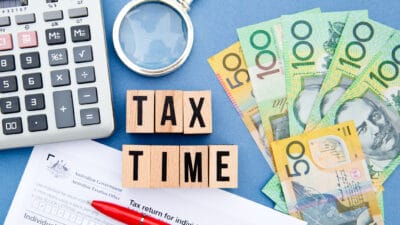Earlier this month, the Reserve Bank of Australia (RBA) raised interest rates. Again. The hike of 0.25% was the 11th hike the RBA has ordered since May 2022, taking the cash rate up to 3.85%.
In the media, we tend to hear about the pain this steep trajectory of rate hikes is inflicting upon mortgage holders more than anything else. And whilst it is true that mortgagees are carrying the burden of the interest rate hikes, they also have a profound, and opposite, impact on savers.
Rising interest rates also mean that the rates of interest that banks and other credit institutions can offer for savings accounts and term deposits have also been rising sharply. At the start of 2022, it was difficult to find a term deposit that was offering an interest rate of more than 1%. But today, the picture is starkly different.
Right now, financial institutions are offering term deposits with interest rates of up to 5% per annum. You can get a 5% term deposit with Judo Capital Holdings Ltd (ASX: JDO) at present, for example. Keep in mind that is for a five-year term though. Similarly, AMP Ltd (ASX: AMP) is currently offering a top interest rate of 4.7% for one year, as long as you have at least $25,000 to deposit.
So with term deposit interest rates at highs we haven't seen for years (possibly a decade), is this the path that income-hungry investors should go down? Do term deposits offer more potential cash flow than ASX dividend shares?
Are term deposits the new dividends?
Well, in some cases, it certainly seems that way. To illustrate, AMP's 12-month term deposit certainly looks like it is yielding more than what Commonwealth Bank of Australia (ASX: CBA) shares are offering right now. At present, CBA's dividend yield is sitting at 4.22%. So that 4.7% or 5% looks pretty attractive.
Those rates are also higher than the current yields from other ASX dividend heavyweights like Telstra Group Ltd (ASX: TLS), Woolworths Group Ltd (ASX: WOW) and Wesfarmers Ltd (ASX: WES).
However, I would argue that term deposits are rarely the right choice for an investor seeking cash flow. Unless capital preservation is a key priority of your investing strategy, it is likely that quality dividend shares can offer you far more than a term deposit can.
For one, there are many ASX dividend shares on the market today offering yields well over 5%. National Australia Bank Ltd (ASX: NAB), Westpac Banking Corp (ASX: WBC) and ANZ Group Holdings Ltd (ASX: ANZ) all currently have dividend yields well in excess of 5%. As does BHP Group Ltd (ASX: BHP), Rio Tinto Limited (ASX: RIO) and Woodside Energy Group Ltd (ASX: WDS).
And that's before we get to franking. Term deposits don't come with franking credits, which means that you will pay full tax on any interest earned. But most of the dividends from all of the companies mentioned today typically come fully franked.
Dividends win almost every time
Franking can add substantial value to your dividend payments, thanks to the tax savings (or cash refunds) they can help you achieve. For instance, the CBA raw dividend yield is at 4.22% today. But if you factor in the bank's full franking credits, this yield grosses up to 6.03%.
One final point in favour of ASX dividend shares. Buying a share means buying into ownership of a business. The value of that business can compound over time, and deliver you substantial capital growth, as well as regular dividend income. We explored how this looks for a quality ASX dividend share just yesterday.
In contrast, with a term deposit, your principal can never increase as long as you have it locked up in a bank. You are also forbidden from accessing that cash, at least without penalty, until the term has expired.
So unless you are an investor that values capital protection above anything else, I would argue that almost every investor is still better off with quality ASX dividend shares than a term deposit today, even with interest rates at an 11-year high.









